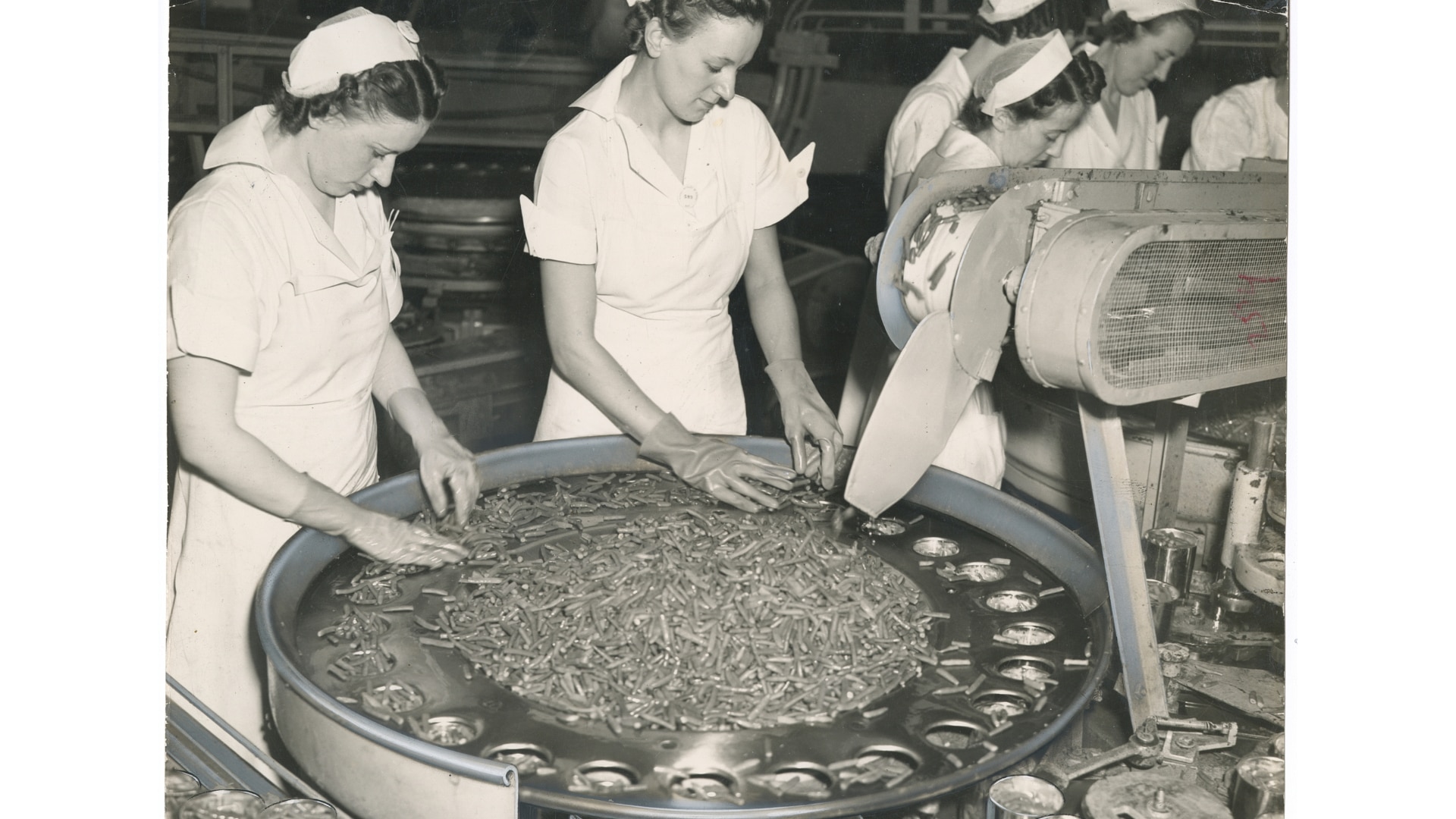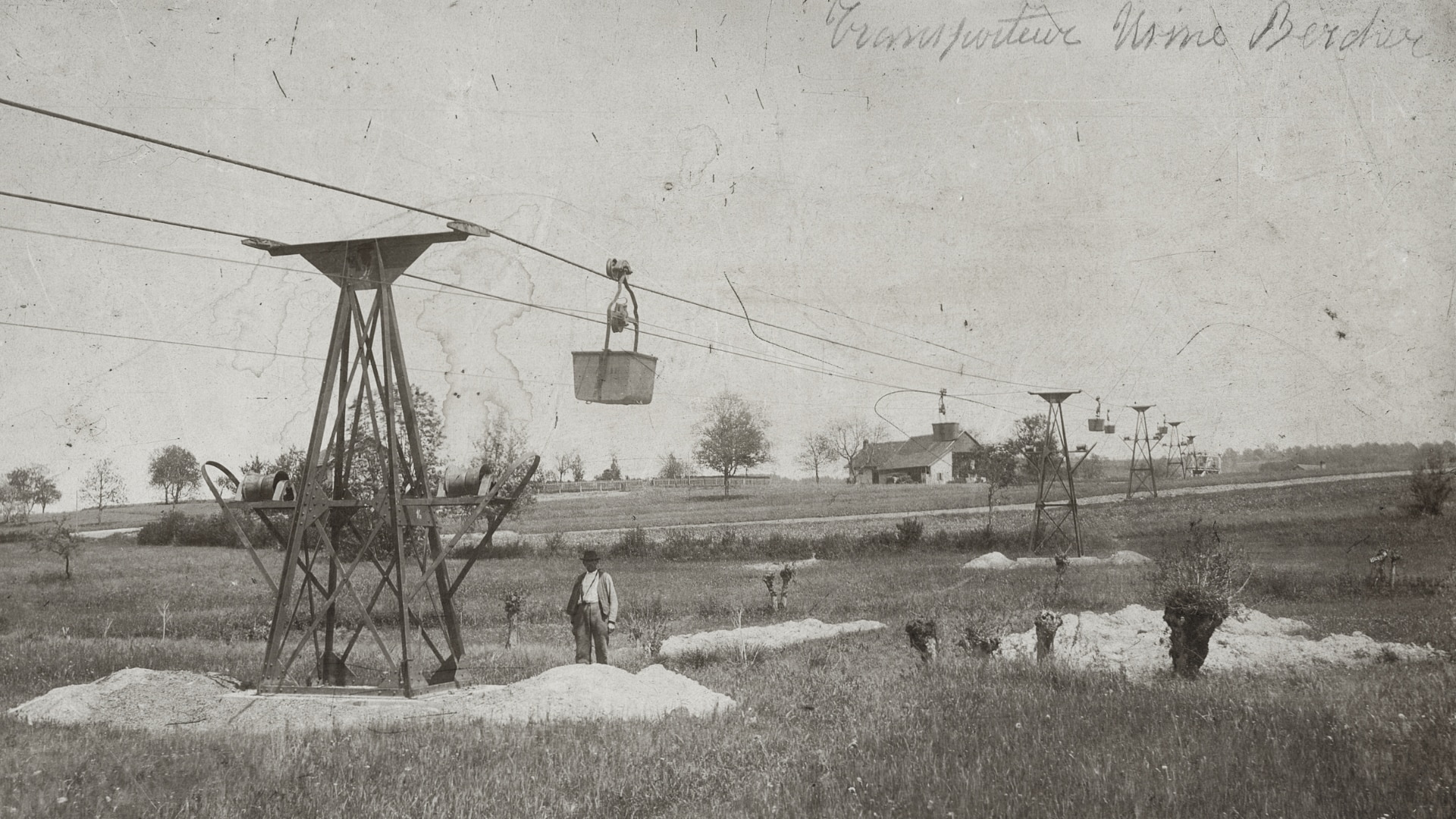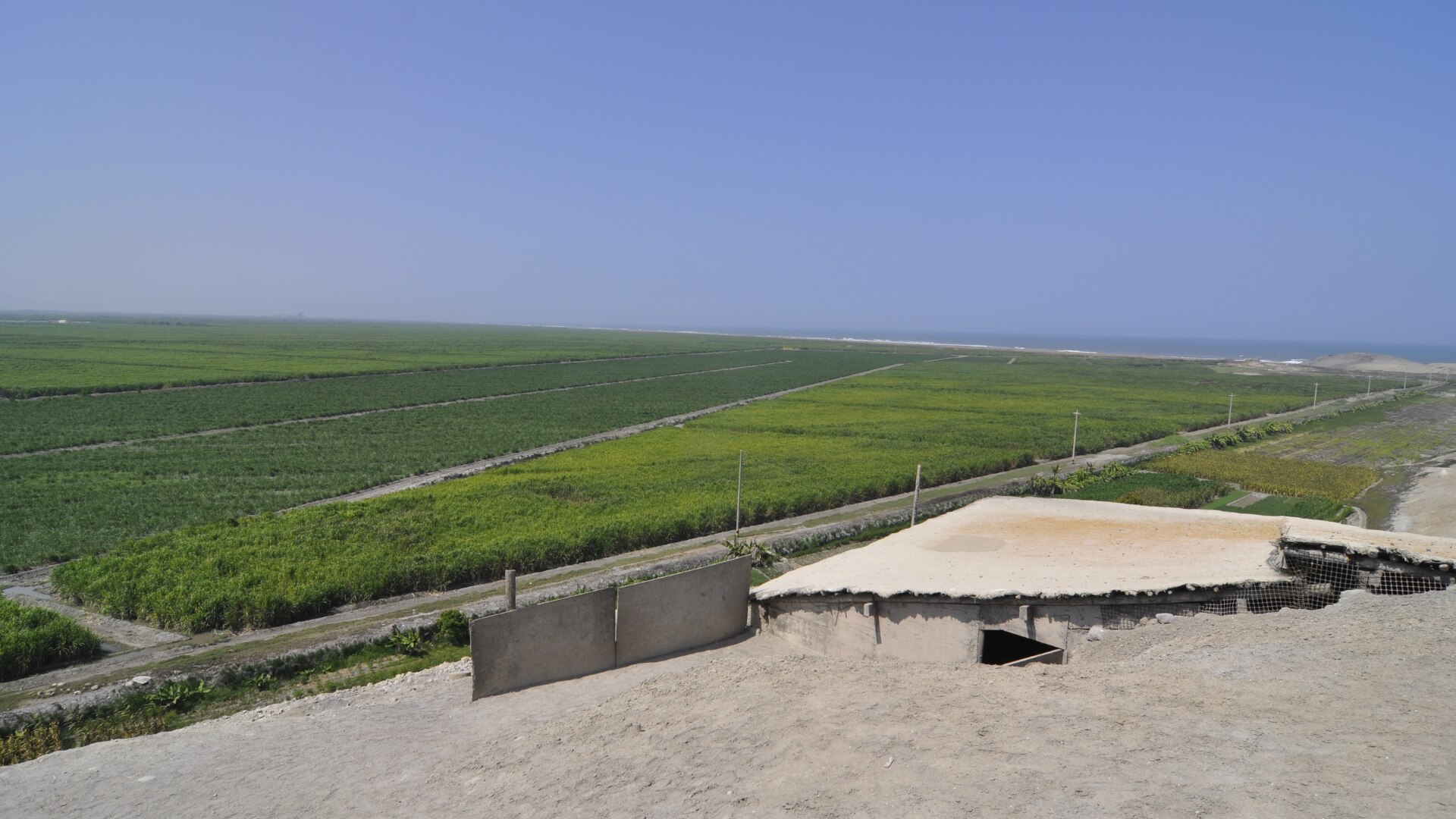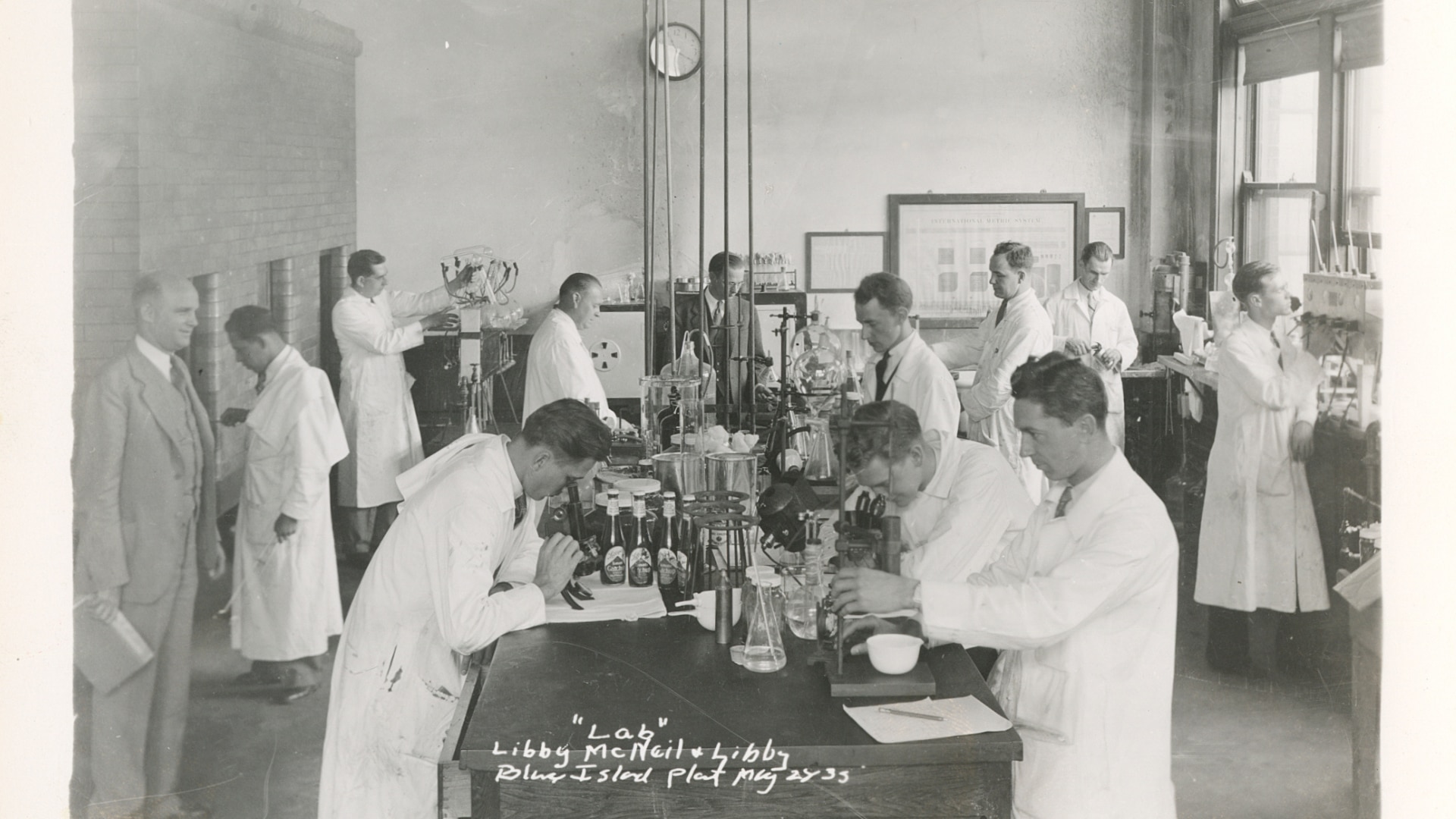The food industry
From ‘revolution’ to ‘revolution’
Düdingen condensed milk factory, Switzerland, 1875-1917, AL500_2, D.R. ©Alimentarium
Since food does not pass directly from producer to consumer, a variety of companies, large and small, are involved in the production, processing, supply, preservation, packaging, and distribution of food products. Together, these activities form what is known as the ‘food industry.’ Historically, since the emergence of cities and markets in ancient times, this sector of activity has continued to grow in importance, benefiting from the satisfaction of consumers’ needs and appetites. The history of the food industry has seen many important milestones that have shaped its trajectory and influenced global food production, in terms of both quantity and quality. Four of these are discussed here.
- The first is the ‘industrial revolution,’ which began in the 18th century and led to the mechanisation of production, the advent of mass production techniques, and the preservation and canning of food.
- The second is the ‘green revolution’ of the mid-twentieth century, during which the development of agricultural techniques and farm machinery, hybrid seeds, and synthetic fertilisers considerably increased crop yields.
- The third is the rise of fast food and the establishment of large restaurant chains, which gained popularity in the mid-twentieth century, transforming the way urban populations access and consume food.
- Finally, the fourth is contemporary. It seeks to reconcile productivity and economy with sustainability, health, and transparency. These stages illustrate several decisive turning points in the history of the food industry, reflecting changes in production, distribution, consumption patterns, and societal values.
Manual filling of bean tins at the Blue Island Libby factory, USA, sd., AL689, D.R. ©Alimentarium
During the ‘industrial revolution’
During the ‘industrial revolution,’ food production was marked by the adoption of steam engines and machinery in agriculture and new techniques in food processing. These techniques considerably boosted farm productivity and facilitated large-scale production. A decisive breakthrough in the 19th century came with the development of industrial processes for canning and preserving food.
These innovations played an essential role in enabling long-term storage and efficient transport over long distances, thereby limiting losses. The mass production of processed, canned, or packaged foods not only brought convenience and accessibility to consumers but also laid the foundations for the rise of agro-industrial conglomerates and global supply chains.
However, reflections on the impact of this ‘revolution’ on health, depending on consumption patterns, and on the environment, according to production techniques, are leading to mixed considerations in some areas. The availability of processed foods and improved preservation methods have not always been enough to enhance food safety. They have reduced seasonal variations in diet and have temporarily contributed to the overall improvement in health and longer life expectancy in Western Europe and North America.
The cableway for the Nestle factory in Bercher, Switzerland, ca 1891, AL613, D.R. ©Alimentarium
The ‘green revolution’
The ‘green revolution’ increased global food production between the 1960s and the 1990s. It was designed to address the pressing problem of food shortages and famines in developing countries. The introduction of high-yielding crop varieties, the intensive use of high-performance agricultural machinery, and the widespread use of pesticides and synthetic fertilisers significantly raised crop yields and productivity. A partial strengthening of food security has enabled millions of people to escape poverty and hunger.
However, this revolution has also had more problematic consequences, such as dependence on fertilisers, herbicides, and fossil fuels for mechanisation, which have led to environmental problems such as soil degradation, water pollution, and loss of biodiversity. Small-scale farmers have faced difficulties due to the cost of adopting modern technologies, which has amplified inequality and drastically reduced traditional farming practices.
While the Green Revolution has achieved its immediate objective of increasing food production, its long-term sustainability and equity are the subject of ongoing debate and efforts to balance agronomic progress with environmental and social considerations.
View of the Huaca Cao Viejo, Trujillo, La Libertad, Peru, 2013, ©Boris Wastiau
In Peru, the ‘green revolution’ saw the introduction of higher-yielding varieties of sugar cane grown on the arid Pacific coast, thanks to new irrigation systems and the use of chemical fertilisers. In the 1990s and 2000s, the plantations were gradually bought up by agribusiness, which shifted production from food to biofuels.
The rise of ‘fast food’ in the mid-twentieth century
The rise of ‘fast food’ in the mid-twentieth century transformed the food industry and eating habits around the world. Their popularity was fuelled by the convenience, affordability, and efficiency of their service, adapted to the lifestyles of the growing number of city-dwellers who now make up the majority of the world's population. The standardisation of menus and service and mass production techniques have enabled these restaurant chains to offer homogenous and familiar meals throughout the world.
The well-known forerunners of this phenomenon are the industrial hamburgers of White Castle, produced and consumed in the United States as early as the 1920s. The convenience of fast food spread around the world in successive waves from the 1950s to the 1990s, to the detriment of food traditions and culinary diversity. Widespread and excessive consumption of this cuisine has also been associated with negative health consequences, including an increase in obesity and diabetes.
As a result, there is growing concern about the impact of fast food on the wellbeing of the world's population, and efforts are being made to strike a balance between convenience and healthier, sustainable options. A renewed interest in preserving cultural food heritage has also emerged in response, notably under the concept of ‘slow food.’
Burger King illuminated sign, France, ca 2000, AL10197, Luís Lourenço ©Alimentarium
A ‘sustainability revolution’
A ‘sustainability revolution’ is sweeping the food industry today. It is characterised by a growing demand for food that is healthy, environmentally and socially responsible, has a low carbon footprint, produces little waste, reduces pollution from non-recycled or non-recyclable packaging, and requires as little water as possible to produce. Evolving legislative frameworks, global environmental and health concerns, and pressure from civil society are all contributing to this. Consumers are looking for more natural options that are more respectful of the environment and of producers.
The rise of plant-based diets is one significant trend, driven by health and ethical considerations as public opinion becomes increasingly aware of the impact of meat consumption on the environment. The emphasis is on the transparency of the food system, with consumers seeking information on the ethical aspects, conditions, and methods of food production.
This represents a transformative change in the food industry, which is adopting a more holistic approach that seeks to reconcile its economy with the well-being of individuals, communities, and the planet.
Caldeira seca, Sete Cidades, São Miguel Island, Azores, Portugal, 2013, ©Boris Wastiau
Despite a certain dependence on intensive agriculture and a high level of livestock farming, the Azores are developing agro-ecological models based on highly diversified organic food production, careful management of water resources and the conservation of 16% of their land and 30% of their territorial waters as protected areas.
Measurement and analysis instruments in the 20th century
Science and technology revolutionised many aspects of the global food industry in the 20th century. The advent of sophisticated equipment such as ‘chromatographs,’ ‘mass spectrometers,’ and ‘recombinant DNA’ techniques enabled precise analysis of food components, potentially advancing food safety and quality, standardising supply chains from production to distribution, and tightening regulations. Sensors monitor all stages of production in real time, from the arrival of ingredients to the storage of the finished product, helping to minimise losses and ensure the freshness of food.
Food engineering has developed more efficient and sustainable processes, responding to global demand while at the same time seeking to reduce environmental impact. These advances have improved efficiency, financial profitability, and compliance with ever-higher safety and quality standards. In this way, science and technology have played a crucial role in the development of the food industry, in a process that has sought to combine profitability, innovation, and sustainability.









